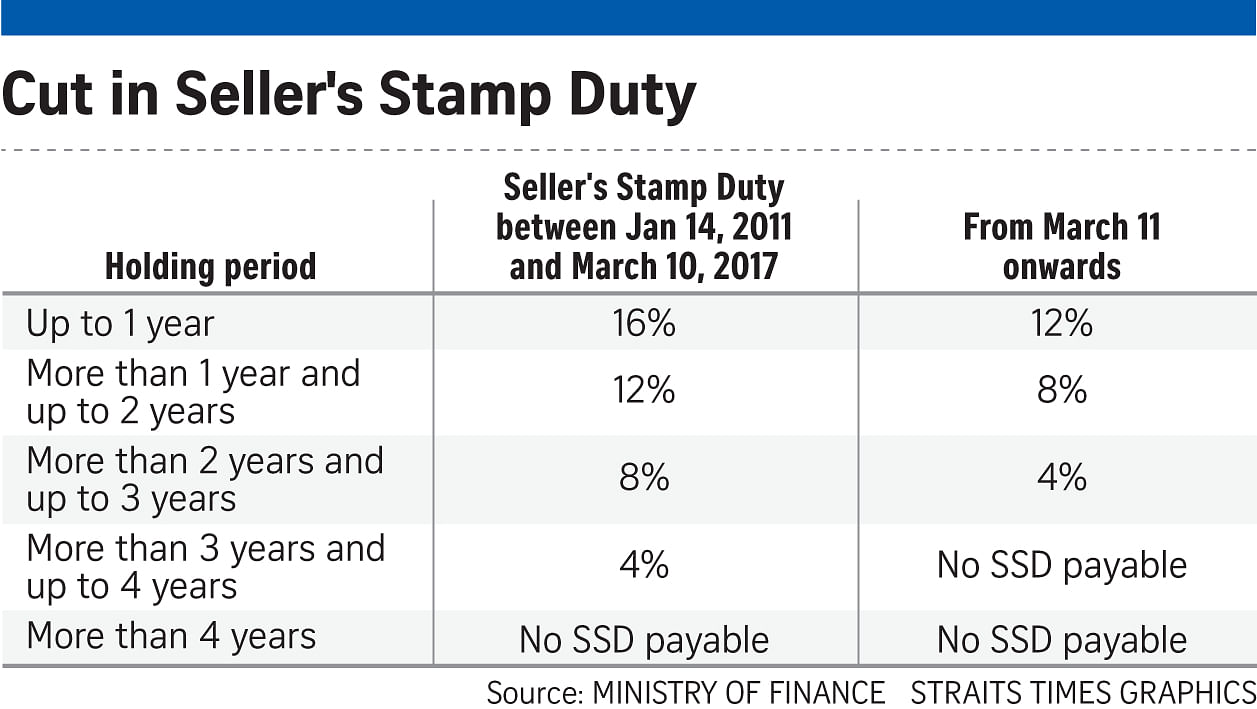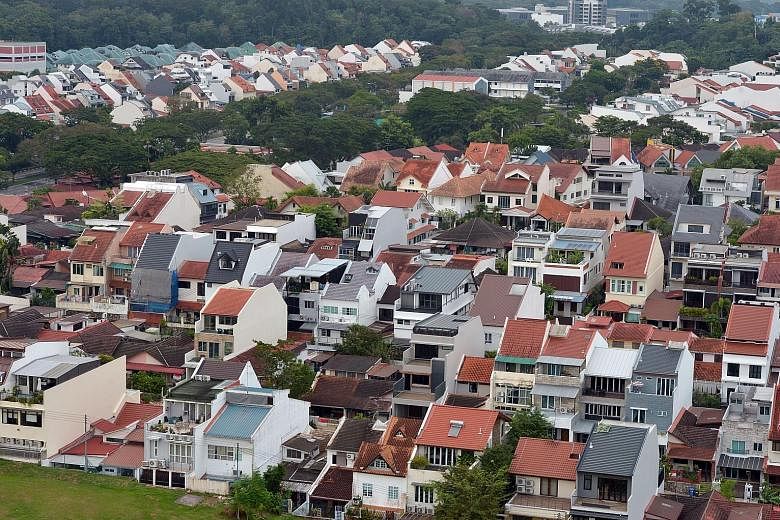Some property analysts expect a modest boost in home sales here after the change in the seller's stamp duty (SSD) rules that take effect today. However, realtor Kelvin Thong narrowly missed out on benefiting from the changes. He exercised his option to purchase a penthouse in West Coast yesterday.
That means he is still subject to the rules which stipulate that if he sells his property within a year, he would have to pay a 16 per cent SSD. If he sells it within two years, it would be 12 per cent, while within three years, it would be 8 per cent and within four years, it would be 4 per cent.
For properties purchased from today, the rates are lower and apply only to sales within three years. That means someone who buys a property today pays only 12 per cent SSD if the property is sold within a year, 8 per cent if sold within two years and 4 per cent within three years.
Mr Thong is not too disappointed as he intends to live in his home over the long term, but "would have liked the flexibility to upgrade or sell earlier without paying the stamp duty", he said.
However, he said he was now more motivated to hunt for a good second property to invest in.

"The 4 percentage point cut in SSD is quite significant. If I manage to get a property at 30 per cent below market price, I would be able to make an 18 per cent profit even after paying the 12 per cent stamp duty if I hold it for less than a year."
People like Mr Thong may boost new home sales, but analysts think the impact will be muted.
Dr Lee Nai Jia, head of South-east Asia research at Edmund Tie and Company, said he would add an additional 3 per cent to his initial forecast of 8,000 private new home sales this year.
The move gives "positive vibes to the market". "It gives the signal that the market is bottoming, which will attract more buyers," he added.
ERA key executive officer Eugene Lim does not expect property prices to rise. "There is still abundant supply in the residential property market and the additional buyer's stamp duty rates and loan to value limits remain unchanged."
Analysts feel that the SSD tweak is targeted at those who may be finding it difficult to service their loan amid the slowing economy.
Ms Christine Li, director of research at Cushman & Wakefield, said that the SSD tweak is timely.
She noted that SSD's intent was to prevent property speculation, but the additional buyer's stamp duty and total debt servicing framework are now much stronger deterrents against speculators compared with the SSD, she said.
"On the flip side, SSD can potentially hit home owners whose circumstances may change due to unforeseen events really hard," she said, as they may have to sell their properties at a loss due to sluggish demand, and have to fork out SSD.
Citing Inland Revenue Authority of Singapore data, Ms Li said that SSD was applied to 550 deals in 2015, up from 519 in 2014. Most were not profitable, particularly among those with holding periods of less than three years, she said.


